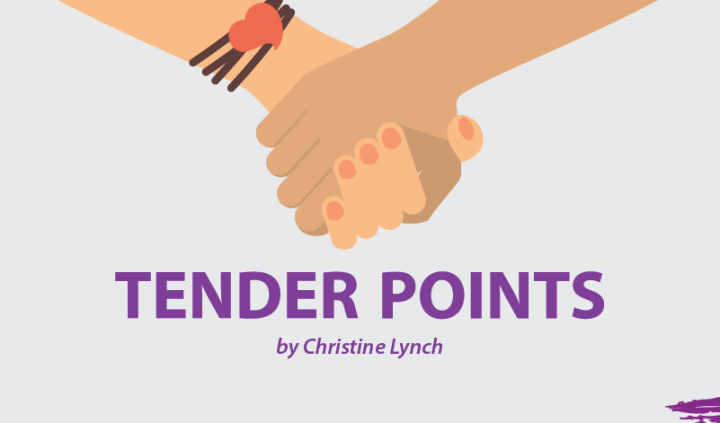I’m about to tell you a story that at first glance appears to have nothing to do with fibromyalgia. Once I’ve told my tale, you’ll know why it does.
Until last week I’d never heard the word “epistaxis.” It’s a fancy way of saying “nosebleed.” I hadn’t had one since childhood. Then last week my nose began to bleed and it took an hour of nose pinching before it stopped. However, it began again that night while I was sleeping. I awoke choking, with pajamas and pillowcase soaked in blood. Again, it took an hour to stop. Soon after getting up in the morning a third episode started. Determined to put an end to this nonsense, I took myself to my local urgent care facility. Of course, by then, the bleeding had stopped. The physician’s assistant who peered into my nose with an otoscope declared there was no problem there except for dryness. He suggested applying a light coating of Vaseline with a Q-tip to the inside of both nostrils. Feeling quite foolish, I went home and felt fine.
Three days later it began again. After three hours, it was still going strong. I drove myself and my cotton-filled nostrils to the emergency room. A head and neck surgeon was called and a nasal endoscope was used to investigate why all of this blood was still dripping down the back of my throat six hours after it had begun. When I was unable to tolerate the pain of the scope in my second nostril, general anesthesia was offered as an alternative. I took it.
At 6 p.m., a large portion of my right inner nasal cavity was cauterized and filled with self-dissolving packing. I awoke in the recovery room in considerable pain which was quickly resolved by three injections of a powerful pain reliever (the only one that does not cause me nausea). I left the hospital nine hours after I’d arrived.
So, how does this relate to having fibromyalgia? In two very significant ways. The first was I instructed the providers I hadn’t previously met about my condition. Upon introduction to the head and neck surgeon, I revealed to him that I had fibromyalgia, which (in case he was unfamiliar) is a central sensitization disorder that magnifies pain. Grateful for this knowledge, he proceeded cautiously. I successfully endured his scope in the first nostril, but not in the second. Because he’d been alerted to my possible response, the procedure was quickly aborted and an alternative offered.
Next was my side effects list. More than two decades ago, I began recording the names of the medications that were recommended for me and the side effects they caused. I didn’t want to duplicate any of the nasty reactions I’d experienced to the chemicals I’d been prescribed. That list has evolved into a three-page spreadsheet that I carry with me at all times. Sharing that document with my surgeon and my anesthesiologist resulted in the substitution of at least three therapies that are used routinely. Had I not done so, any one of those three medicines would have caused me nausea and vomiting in addition to post-surgical discomfort.
So, here’s my message for fellow fibromites. Arm yourself at all times with any information you need should you ever require an emergency surgical procedure — even if it means (as it does in my case) carrying with you a three-page spreadsheet. Having the knowledge and sharing it with those who need to know are the keys to limiting unnecessary pain and suffering.
***
Note: Fibromyalgia News Today is strictly a news and information website about the disease. It does not provide medical advice, diagnosis, or treatment. This content is not intended to be a substitute for professional medical advice, diagnosis, or treatment. Always seek the advice of your physician or other qualified health provider with any questions you may have regarding a medical condition. Never disregard professional medical advice or delay in seeking it because of something you have read on this website. The opinions expressed in this column are not those of Fibromyalgia News Today, or its parent company, BioNews Services, and are intended to spark discussion about issues pertaining to fibromyalgia.


